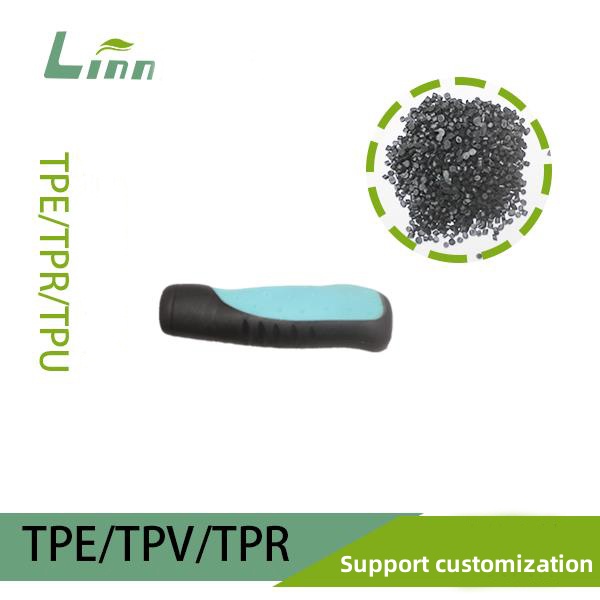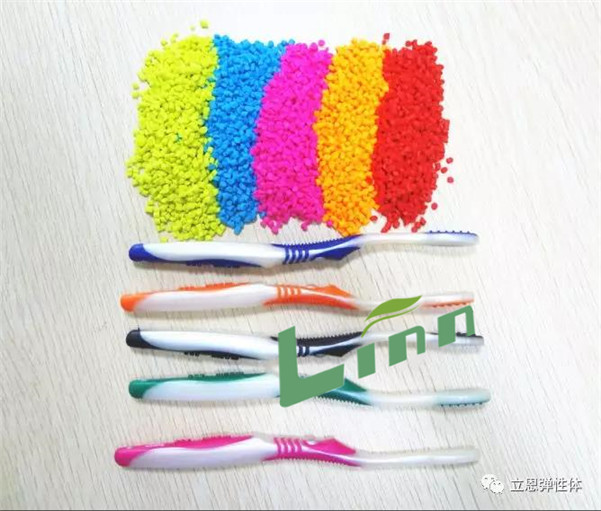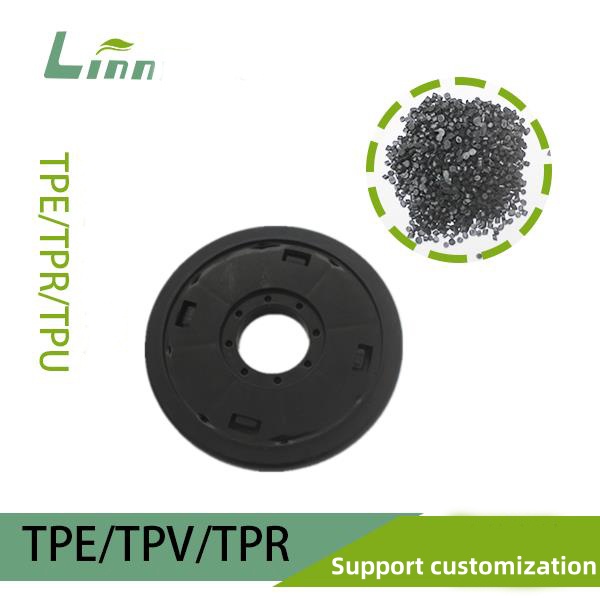As someone who’s spent over a decade troubleshooting quirks in the rubber and plastics industry, I’ve seen my fair share of head-scratchers on the production line. One issue that keeps popping up, especially with black TPR (thermoplastic rubber) products, is those pesky white flow marks that mar an otherwise sleek surface. These streaks aren’t just a cosmetic nuisance—they can signal deeper issues in your process, potentially affecting product quality and customer satisfaction. Today, I’m diving deep into why these white flow marks appear and sharing practical, battle-tested solutions to banish them for good. Let’s roll up our sleeves and get to work!

What Are White Flow Marks, and Why Do They Haunt Black TPR Products?
White flow marks, sometimes called flow lines or streaks, are light-colored, wavy patterns that appear on the surface of dark-colored TPR products, particularly black ones. They stand out starkly against the deep hue, making them an instant eyesore. In my experience, these marks are especially frustrating because they’re not just surface-level—they often hint at underlying issues in material behavior, mold design, or processing parameters.
The root causes of white flow marks in black TPR products typically boil down to:
Material flow issues: TPR’s viscosity and flowability at high temperatures can lead to uneven filling, causing streaks.
Pigment dispersion problems: The black colorant (often carbon black) may not disperse evenly, resulting in lighter patches.
Mold surface interactions: Friction or residue on the mold surface can disrupt material flow, creating visible marks.
Injection process mismatches: Incorrect pressure, speed, or temperature settings can cause turbulent flow or incomplete mixing.
Moisture or contamination: Trapped moisture or impurities in the TPR material can manifest as white streaks.
By pinpointing these culprits, we can craft a targeted strategy to eliminate white flow marks, ensuring your black TPR products come out flawless.
Proven Solutions to Eliminate White Flow Marks
Over the years, I’ve developed a systematic approach to tackle white flow marks, combining material tweaks, process adjustments, and mold optimizations. Below, I break down the key steps, each backed by real-world experience.
1. Optimize TPR Material and Colorant Selection
The quality and compatibility of your TPR material and black colorant are critical to preventing flow marks. High-flow TPR grades and well-dispersed pigments are your first line of defense.
Choose high-flow TPR: Black TPR products often use carbon black, which can increase viscosity. Select TPR with a melt flow index (MFI) of 20-40 g/10min to ensure smooth mold filling. Check material data sheets to confirm flow properties.
Improve pigment dispersion: Poorly dispersed carbon black is a common cause of white streaks. Work with your supplier to source pre-dispersed masterbatch or high-quality carbon black with particle sizes below 20 nm. In one project, switching to a masterbatch with better dispersion cut flow marks by 80%.
Dry the material thoroughly: Moisture in TPR or colorant can vaporize during injection, creating white streaks. Dry TPR granules at 80°C for 4-6 hours before processing, and store colorants in a low-humidity environment.
Test for contamination: Impurities like dust or incompatible additives can cause streaks. Inspect raw materials under a microscope or run a small-batch test to rule out contamination.
I once worked with a factory where white flow marks plagued their black TPR grips. After testing, we found the carbon black was clumping due to poor mixing. Switching to a high-dispersion masterbatch solved the issue overnight.

2. Fine-Tune Injection Molding Parameters
Injection molding is a delicate dance of pressure, speed, and temperature. Getting these parameters right is crucial to preventing flow marks. Here’s how I approach it:
Adjust injection speed: High speeds can cause turbulence, leading to flow marks, while low speeds may result in incomplete filling. Use segmented injection: start at 20%-30% speed for the first 30% of the shot, then ramp up to 50%-70% for the remainder. This ensures smooth flow without turbulence.
Increase injection pressure: Low pressure can cause hesitation in material flow, creating streaks. Set pressure to 90-130 MPa, adjusting based on mold complexity and part thickness.
Optimize melt temperature: TPR’s melt temperature should be 180°C-220°C. Too high, and you risk degrading the material or colorant; too low, and flowability suffers. I recommend starting at 190°C and tweaking in 5°C increments.
Extend holding time: Insufficient holding time can lead to uneven surface cooling, exacerbating flow marks. Set holding time to 3-6 seconds, depending on part size.
Increase back pressure: Low back pressure can cause uneven mixing of TPR and colorant. Increase to 5-10 MPa to improve homogeneity.
During a troubleshooting session, we noticed white streaks on black TPR phone cases. By slowing the initial injection speed and raising back pressure, we eliminated the marks without changing the material.
3. Enhance Mold Design and Maintenance
The mold plays a starring role in TPR product quality. A poorly designed or maintained mold can amplify flow mark issues. Here’s what to focus on:
Polish mold surfaces: Rough mold surfaces increase friction, disrupting material flow and causing streaks. Polish cavities to Ra0.2 or below using diamond paste for a mirror-like finish.
Improve venting: Trapped air can force material to flow unevenly, creating flow marks. Add 0.02-0.05mm vent slots along parting lines or at cavity edges, and clean vents every 5,000 shots.
Control mold temperature: Uneven temperatures cause inconsistent cooling, leading to streaks. Use a mold temperature controller to maintain 40°C-60°C, with cooling channels evenly distributed.
Minimize shear points: Sharp corners or narrow gates in the mold can cause excessive shear, breaking down colorants and creating white marks. Use fan gates or widen gate sizes to 1.5-2 mm for smoother flow.
I once overhauled a mold for black TPR seals that had persistent flow marks. Polishing the cavity and adding two vent slots reduced defects by 90%.

4. Optimize Release Agent Use
Release agents are a double-edged sword—essential for demolding but problematic if misused. Here’s how to get it right:
Switch to water-based agents: Oil-based release agents can leave residue that reacts with TPR, causing streaks. Water-based agents are less likely to interfere with surface quality.
Apply sparingly: Over-application creates uneven surfaces. Spray a thin, even coat from 30-40cm away, and wipe excess with a clean cloth.
Reduce frequency: Apply release agent every 3-5 shots, or less if the material releases easily. Overuse can build up residue, contributing to flow marks.
5. Strengthen Material Mixing and Machine Maintenance
Uneven mixing or machine issues can exacerbate flow marks. Here’s how to address them:
Enhance screw mixing: The injection machine’s screw design affects colorant dispersion. Use a mixing screw with a high L/D ratio (e.g., 20:1) to ensure thorough blending.
Clean the barrel and screw: Residue from previous runs can contaminate black TPR, causing streaks. Clean the barrel with a purging compound every 10,000 shots or when switching materials.
Check for wear: Worn screws or barrels can reduce mixing efficiency. Inspect components annually and replace if wear exceeds 0.1mm.
In one factory, white streaks appeared after a material change. Cleaning the barrel revealed old TPR residue, and a thorough purge resolved the issue.
6. Control Production Environment
Environmental factors can subtly influence flow marks, especially in humid or dusty conditions. My tips include:
Maintain low humidity: High humidity can introduce moisture into TPR or colorants. Keep workshop humidity at 50%-60% using dehumidifiers.
Ensure cleanliness: Dust or oil in the workshop can contaminate materials or molds. Clean the injection area daily and use air filters to reduce airborne particles.
Train operators: Inconsistent parameter settings or improper material handling can cause flow marks. Conduct quarterly training to reinforce best practices.
White Flow Marks Solutions Summary Table
For quick reference, here’s a table summarizing the causes and solutions for white flow marks on black TPR products:
|
Cause |
Symptoms |
Solutions |
|---|---|---|
|
Poor material flow |
Wavy streaks, uneven surface |
Use high-flow TPR (MFI 20-40 g/10min), dry at 80°C for 4-6 hours |
|
Uneven pigment dispersion |
White patches, inconsistent color |
Use pre-dispersed masterbatch, ensure carbon black particle size <20 nm |
|
Rough mold surface |
Streaks along flow paths |
Polish cavities to Ra0.2, clean every 5,000 shots |
|
Improper injection parameters |
Turbulent streaks, light lines |
Use segmented injection (20%-30% then 50%-70%), set pressure to 90-130 MPa |
|
Poor venting |
Streaks near edges, air pockets |
Add 0.02-0.05mm vent slots, clean vents regularly |
|
Excessive release agent |
Localized white marks, glossy spots |
Use water-based agents, apply every 3-5 shots, spray evenly |
|
Contaminated material/machine |
Random streaks, inconsistent defects |
Clean barrel/screw, inspect for contamination, use purging compound |
Real-World Case Study: Turning Streaks into Success
A couple of years ago, a client approached me in a bind—their black TPR automotive grips had white flow marks, leading to a 25% rejection rate. After a site visit, I identified three key issues:
The TPR material had a low MFI (15 g/10min), causing poor flow.
The mold had rough surfaces (Ra0.8) and inadequate venting.
The injection speed was too high, creating turbulence.
We took the following steps:
Switched to a TPR grade with an MFI of 30 g/10min and a high-dispersion carbon black masterbatch.
Polished the mold to Ra0.2 and added four vent slots.
Adjusted to segmented injection with a slower initial speed.
Within two weeks of trial production, the flow marks disappeared, and the rejection rate plummeted to under 3%. This project underscored the power of targeted, multi-pronged solutions.

FAQs: Your Questions Answered
To round out this guide, I’ve compiled answers to common questions about white flow marks:
Q1: Do white flow marks affect the functionality of TPR products?
A: While primarily cosmetic, flow marks can indicate uneven material distribution, which may weaken the product or reduce durability over time.
Q2: I’ve optimized injection parameters, but flow marks persist. What should I check?
A: Inspect the mold for rough surfaces or poor venting, and verify the TPR and colorant quality. Test a different masterbatch or dry the material longer.
Q3: How can I confirm if flow marks are due to material or process issues?
A: Run small-batch tests with fixed parameters, swapping material batches. If marks change with the material, it’s likely a material issue; otherwise, focus on the process or mold.
Q4: Are there specific carbon black grades for TPR?
A: Look for high-dispersion carbon black with particle sizes below 20 nm, ideally in a masterbatch form. Consult suppliers via the China Rubber Industry Association for recommendations.
Q5: Why do flow marks appear only in large-scale production?
A: Large-scale runs can lead to mold overheating, residue buildup, or material inconsistencies. Monitor mold temperature, clean regularly, and ensure batch-to-batch material consistency.
Wrapping Up
White flow marks on black TPR products can feel like a relentless foe, but with the right approach—optimizing materials, dialing in processes, refining molds, and controlling the environment—you can achieve pristine results. As a lifelong problem-solver, I find joy in turning production challenges into opportunities for improvement. I hope this guide arms you with the tools to conquer flow marks and elevate your TPR products to new heights.
Got more questions or need advice on TPR production? I’m all ears—let’s keep the conversation going and drive quality forward together!





